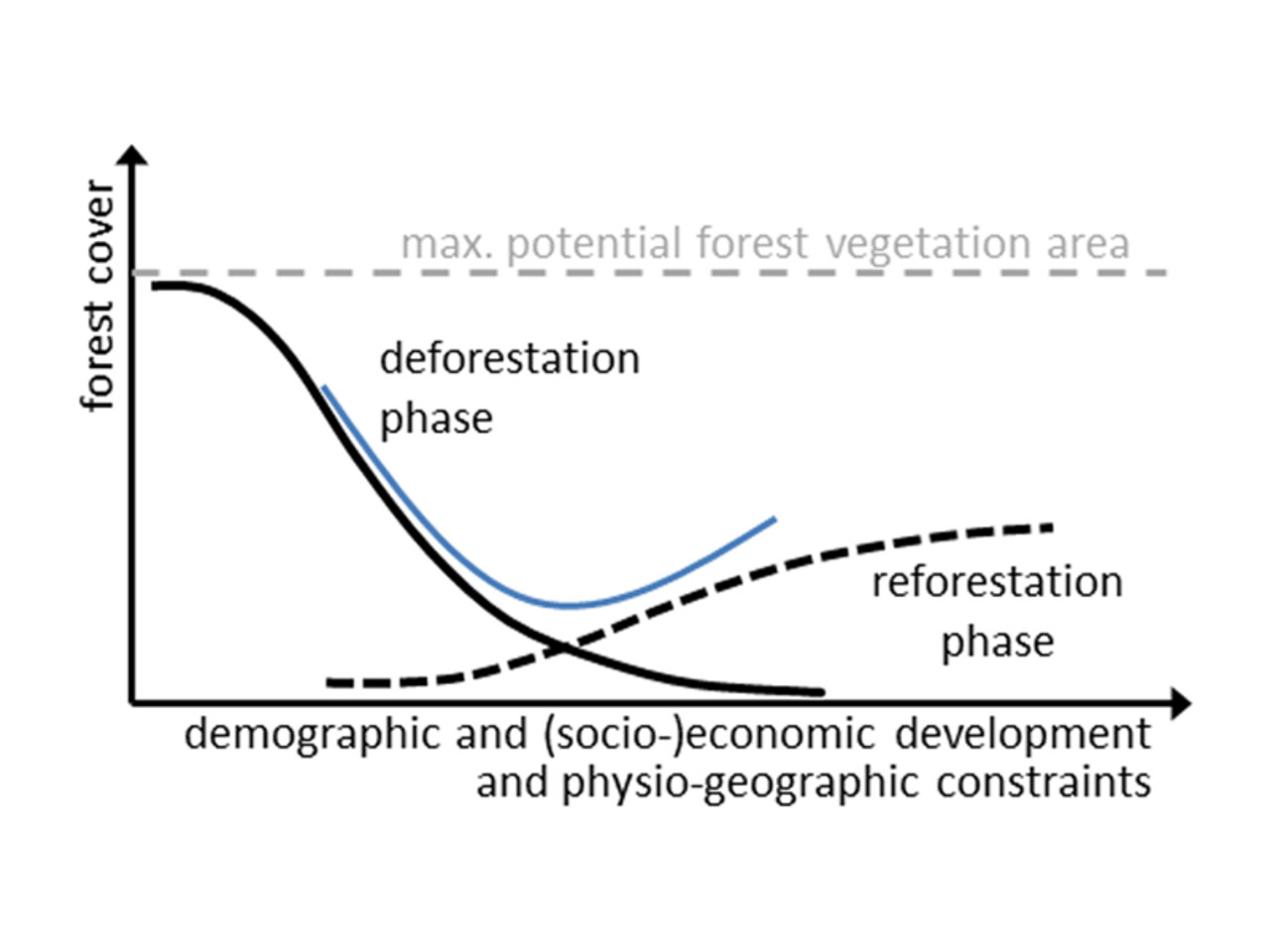Project
Global deforestation patterns

Cross-national deforestation patterns as basis for REDD+ reference levels
Background and Objective
The UnitedNationsplan to pay developing countries iftheyavoiddeforestationandforest degradationand therebyreduceemissions overthe so-calledREDD+*system (*Reducing Emissions fromDeforestation andForestDegradation).
In order toquantifywhat success each country achieved ina given period, theactualdeforestationdevelopment shall be compared with a reference.So-called referencelevels shall be used to predict the national forest areadevelopment that would occur withoutincentives throughREDD+, i.e., without additionalefforts to reducedeforestation.
If theincentive and compensationsystem should be efficient and equitable, it presupposesaglobally consistentmethod for reference level design. Our method suggests the consideration of historical forest cover of each country and further national circumstances.
Our aim isto demonstrate the existence of a uniform patterninthedeforestation development of thecountries in the worldand to derivea globaldeforestation curve. From this wewant to developa standardised methodto determineREDD+referencelevels, which take into accountcountry-specificcircumstances.
Target Group
Policy, Science
Approach
We base our analyses on the "Forest Transition Hypothesis". It states that forest area development follows a recurring pattern of forest cover decline and later re-expansion. Although such patterns have already been described for individual countries, it could not be demonstrated so far that the hypothesis is valid globally. A significant problem for such evidence is that such patterns are shifted and distorted over time between regions and countries.
To empirically test forest area patterns on a global scale, we have analysed the deforestation development of 112 developing and 30 industrialised countries, by applying multiple regression analyses. We have tested the influence of various factors on the deforestation development across the nations. We used data available from global statistics and cartographies on demographic, (socio-)economic and physio-geographical conditions of these countries.
Our Research Questions
Is therearecurring patterninthedevelopmentof forest areas of the world across nations and time?
Can a pattern of deforestation development be determined empirically?
Which country-specific circumstances influence the deforestation development?
Results
We found a uniform relation of deforestation and population density across nations and time. This allowed us to determine a global deforestation curve.
The most significant impact on the forest cover of a country have:
• population density,
• grain yield per hectare,
• soil productive capacity and
• potential forest area.
A significant influence of the gross domestic product and further (socio-)economic factors, we could not determine.
Furthermore, we found no significant difference between the deforestation patterns of developing and industrialised countries. This shows that the curve may actually claim global validity.
The global deforestation curve is suitable to predict the forest cover of the countries in a future period. For prediction country-specific data for each nation are used, applied for the significant influencing parameters. On this basis, we have developed a method to apply the deforestation curve as a forward-looking REDD+ reference level. The creditable deforestation reduction, which is accounted for a country under REDD+, would therefore be the actual forest cover development in a commitment period relative to the reference level. Forest area changes, which are caused by the country-specific circumstances, are subtracted from the individual countries’ responsibilities.
Thünen-Contact

Involved Thünen-Partners
Duration
7.2009 - 12.2013
More Information
Project status:
finished
List of Publications
- 0
Köthke M, Schröppel B, Elsasser P (2014) National REDD + reference levels deduced from the global deforestation curve. Forest Pol Econ 43:18-28, DOI:10.1016/j.forpol.2014.03.002
- 1
Köthke M, Leischner B, Elsasser P (2013) Uniform global deforestation patterns - an empirical analysis. Forest Pol Econ 28:23-37, DOI:10.1016/j.forpol.2013.01.001
- 2
Leischner B, Köthke M, Elsasser P (2011) Does the Forest Transition Hypothesis provide options for the establishment of country specific REDD baselines? - Preliminary results of a regression analysis. Hamburg: vTI, 20 p, Arbeitsber Inst Ökon Working Paper 2011/2
https://literatur.thuenen.de/digbib_extern/bitv/dn048604.pdf
- 3
Leischner B, Köthke M, Elsasser P (2010) Generating credits in REDD - does the forest transition hypothesis provide options for the establishment of country specific baselines? - preliminary results of a regression analysis : paper presented at the International Conference-Forum Emerging Economic Mechanisms: Implications for Forest-Related Policies and Sector Governance, Rome (Italy) 5 to 7 October 2010. Rome: FAO, 13 p








